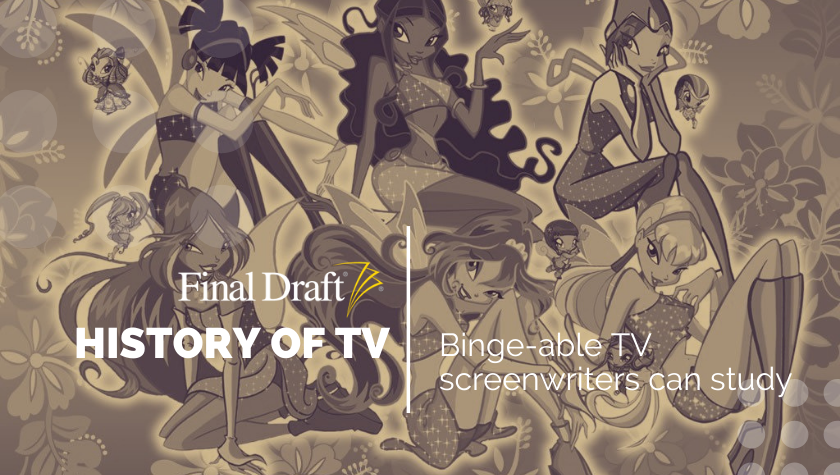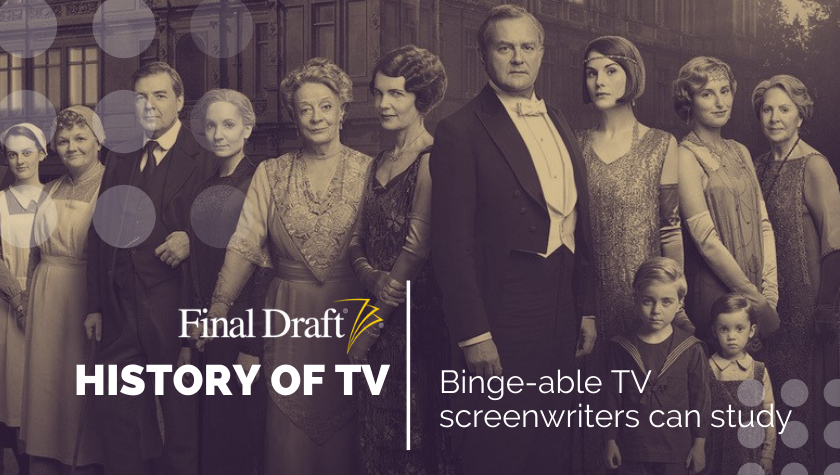History of TV: True Blood
May 26, 2022
Photo courtesy of Hulu
There’s something about vampires. From Blade: The Series to Buffy, The Vampire Diaries to What We Do In the Shadows, and even more over the decades, vampire shows are a television staple. And then there is the Golden Globe® and Emmy® award-winning True Blood. From creator Alan Ball (Six Feet Under), HBO’s fantasy drama offers up plenty of seductive character dynamics, relevant themes and a singular tone to sink your teeth into as a screenwriter. Binge at your own risk—and read on for all the juicy details.
A compelling series set-up
While the love triangles alone are worthy of study, the world-building of a series that contains vampires, shapeshifters and more is useful for the genre writer.
Unlike other vampire-themed shows, True Blood had its vampires “come out of the coffin” which split both the supernaturals and the humans into two camps: Those that believed integration through citizenship and equal rights was possible and necessary, and those that don’t. Vampires can now survive on synthetic “Tru Blood” while humans “use” vamp blood as a narcotic, which ultimately helped to ground the series around political, social and cultural parallels to our world.
Screenwriting themes and tropes
“I’m from the South, Charlaine’s from the South. It had a very authentic Southern feel to it. It’s this great mix of drama and comedy and horror and sex and violence and social commentary. She walked this line that was so incredibly entertaining that I couldn’t put the book down,” Ball once told the Television Academy Foundation. He read a few more books—and the TV series based on Charlaine Harris’ “The Southern Vampire Mysteries” book series was born.
The HBO hit tackled addiction, abuse, equal rights, discrimination, and violence against minorities & the LGBTQ communities. And because it was HBO, the writers could do so unabashedly.
HBO has never played it safe, and True Blood was no different. One way to keep your audience hooked: No one is safe, not even the core cast. Kill your darlings, darling.
Embodying the characters of Bon Temps
Sookie Stackhouse (Anna Paquin) waits tables at Merlotte’s Bar and Grill in the little fictional town of Bon Temps and is not exclusively human herself (human-faerie telepathic hybrid). Throughout the series, she is discovering herself through relationships, the first being with 174-year-old vampire Bill Compton (Stephen Moyer), and is eventually caught up in a love triangle with Bill and a character played by Alexander Skarsgard.
All of the characters that lived in Bon Temps, while familiar beasts of the fantasy and humankind, had a unique Southern twist to them that played into that all-important element that ties a show together: Tone.
In Retrospect
While some fans feel the last two seasons didn’t hold up to the rest of the series, they at least saw the story arc through to completion with endings—happy or not—for all of the characters. In a world where this is increasingly rare, True Blood is a must-binge study guide for genre fans for this epic screenwriting feat alone. True Blood is surprisingly funny, and bloody, and it can be just as romantic as it is disturbingly revolting on every level. It’s a one-of-a-kind contribution to TV for the way it ties all of those elements together—a masterclass for genre screenwriters if you will.
True Blood may be coming back to a small screen near you. As Variety reported in late 2020, the original creator and showrunner Alan Ball is set to return as an executive producer, with screenwriters Roberto Aguirre-Sacases (Riverdale, The Chilling Adventures of Sabrina) and Jami O’Brien (NOS4A2, Fear the Walking Dead) who worked together on 2011’s Big Love.
Written by: Karin Maxey
After seeing her first big screen movie 007: License to Kill at age six, Karin naturally became obsessed with writing action-infused stories. The next time she’d see Benicio del Toro was in person, at the 68th Cannes Film Festival—he was there for the Sicario red carpet, she was there for her first produced short film in the basement of the Palais…same-same. In between, Karin earned a Creative Writing Degree and landed management at Echo Lake Entertainment. Her scripts have been a Big Break Top 3 finalist, HollyShorts Film Fest Official Selection, and a multi-Screencraft competitions semi-finalist. Karin is also a screenplay editor who delights in the process of polishing writers' work for submission. You can find her at www.writergirlkarin.com.- Topics:
- Discussing TV & Film




